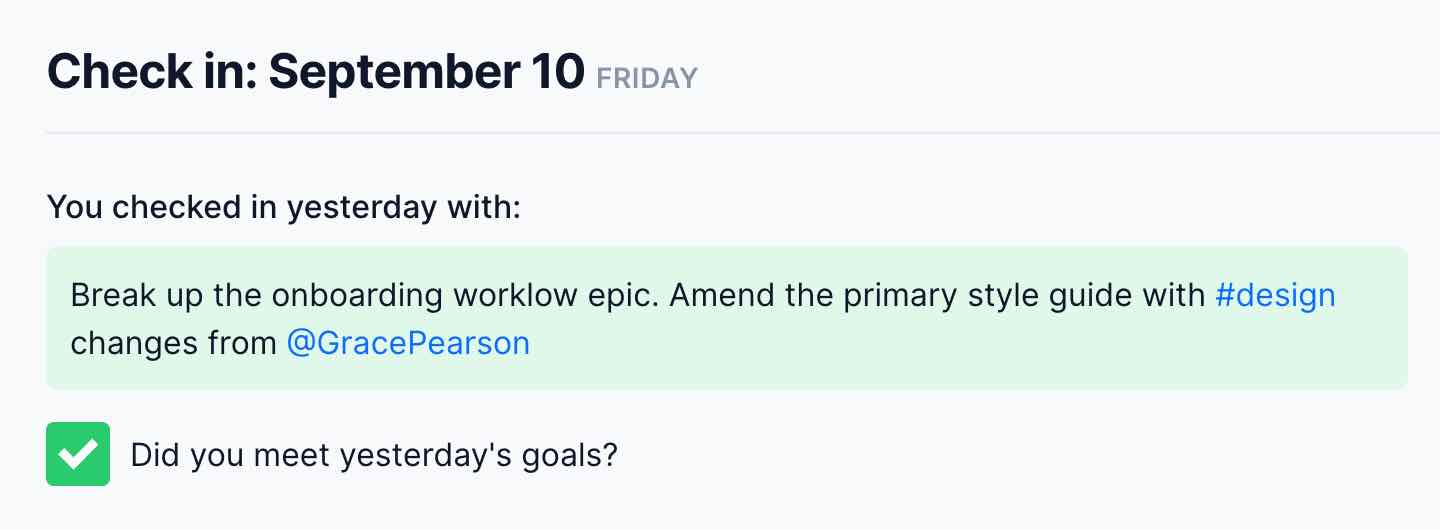The Status Hero product is decidedly opinionated about goal setting. As a contributor, for each check-in, the tool will print out your stated goals from your previous check-in and then give you a single yes/no checkbox to indicate that you hit them or not. There is no partial credit and no way to roll over a goal.
We’ve published a couple of articles describing the philosophy driving this approach (here and here), but to summarize:
- Goals are not tasks. You already have plenty of task managers like Jira or Asana. Tasks are in support of a goal: an aim or desired result.
- Developers, creatives, and other knowledge workers only have the capacity and energy to engage with and achieve 1 or 2 goals (not tasks) a day.
- Without rollovers and partial credit for goals (that’s for tasks), team members become much better at setting expectations for themselves. You either matched your intention or you didn’t since your last check-in.
- When team members start setting and hitting goals accurately, the data they can provide managers for software delivery estimates is far more reliable. They develop a deeper understanding of their own velocity and the factors which may block them, which is difficult to discern from the endless rollover inherent in task/todo lists.
- Since the goal-setting timeframe is relatively tiny between check-ins (usually a day), team members can’t set goals too conservatively without managers or teammates catching on, yet they still have ownership of them.

So there are clear individual and organization benefits there. But underlying it all is that this method of goal tracking is also a way of continuously delivering incremental value to the business.
Let me explain:
Software development is a complex task, and the variables involved make it very difficult for even the most seasoned professionals to create estimates for extensive feature sets or releases.
Often, for big estimates and year-long roadmaps, stakeholders and developers end up negotiating completion dates. Management pushes for unrealistic dates, and developers respond with overly conservative estimates. And back and forth. It’s a vicious cycle that does not benefit the customer. Count yourself lucky if you’ve managed to avoid the bureaucracy of a yearly roadmap process.
There is a mitigating strategy that many high-performing companies have adopted, and that’s to frequently and consistently deliver much smaller chunks of value. Sure, the business has a general idea of milestones–certainly enough to align a GTM strategy–but very specific dates and line items are not worked out in detail beforehand. Our friend Luca Rossi discusses this strategy in detail in his recent post How to avoid negotiating estimates. Check it out when you get a minute.
With Status Hero’s approach to goal tracking, the tool can help you and your team adopt this approach out of the box. Managers and stakeholders can craft precise team-wide estimates starting with the building blocks of incremental goals at the contributor level.
This way, you can use Asana, Monday, or one of the other project management players to track tasks, epics, assignments, target dates, and rollovers. (We integrate with all of them!) But use Status Hero as a source of truth for contributor goals and understanding how and when value can flow from the team to the business.
When I get asked what the primary differentiator is between Status Hero and its competitors, I’ll most often answer with this.

